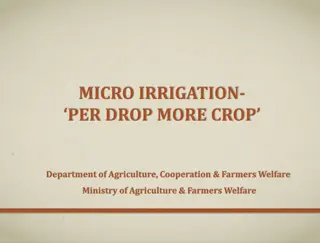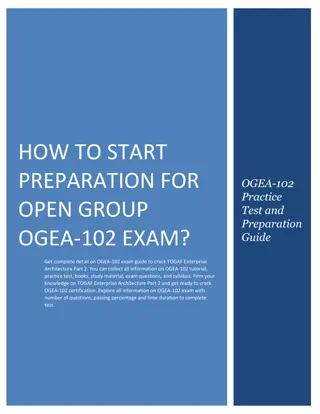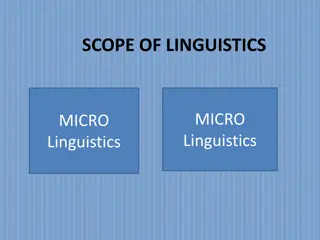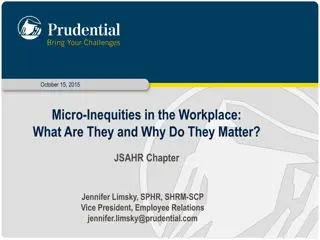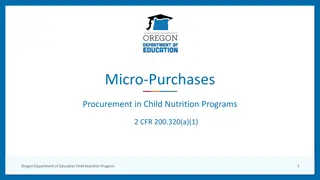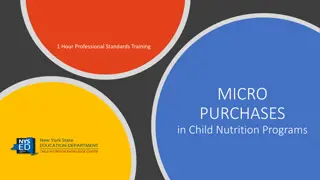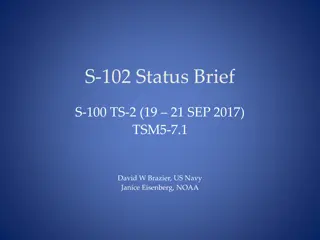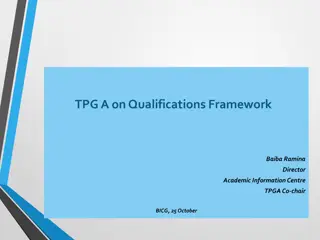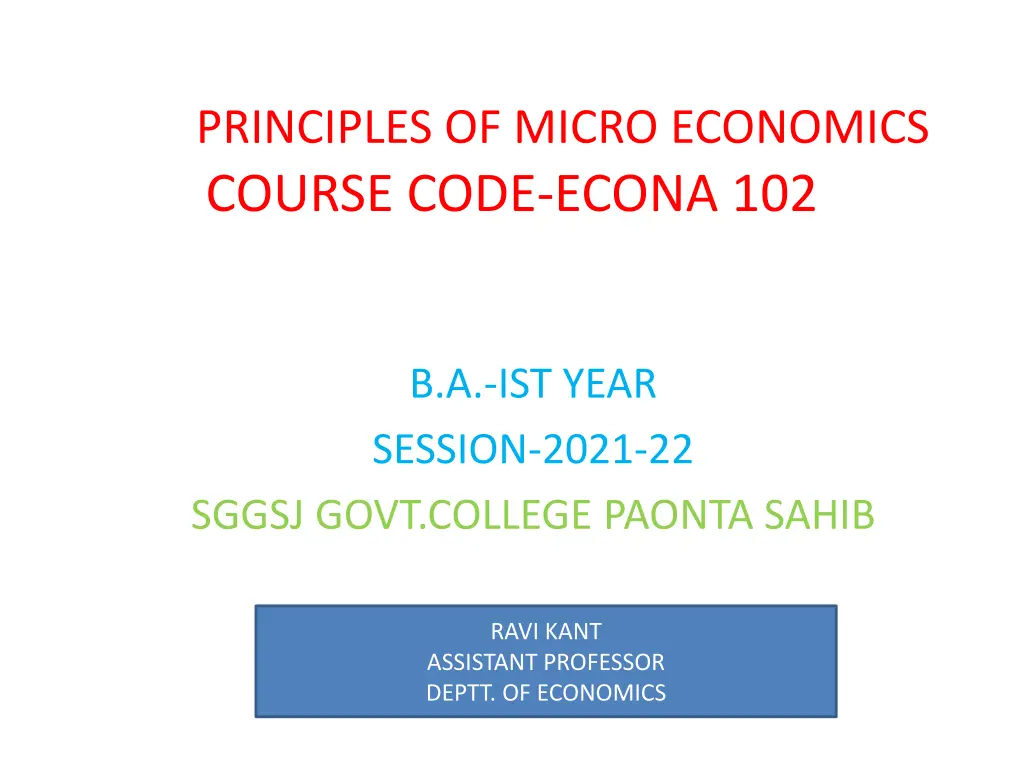
Microeconomics Course Overview
Explore the fundamentals of microeconomics in this course outline covering monopoly, monopolistic competition, market failure, income distribution, price discrimination, and more. Understand key concepts such as the theory of a monopoly firm, price and output determination under discrimination, and the theory of monopolistic competition.
Download Presentation

Please find below an Image/Link to download the presentation.
The content on the website is provided AS IS for your information and personal use only. It may not be sold, licensed, or shared on other websites without obtaining consent from the author. If you encounter any issues during the download, it is possible that the publisher has removed the file from their server.
You are allowed to download the files provided on this website for personal or commercial use, subject to the condition that they are used lawfully. All files are the property of their respective owners.
The content on the website is provided AS IS for your information and personal use only. It may not be sold, licensed, or shared on other websites without obtaining consent from the author.
E N D
Presentation Transcript
PRINCIPLES OF MICRO ECONOMICS COURSE CODE-ECONA 102 B.A.-IST YEAR SESSION-2021-22 SGGSJ GOVT.COLLEGE PAONTA SAHIB RAVI KANT ASSISTANT PROFESSOR DEPTT. OF ECONOMICS
COURSE OUTLINE UNIT-I: Theory of a Monopoly UNIT-II: Monopolistic Competition and Oligopoly UNIT-III: Market Failure and Factor Pricing UNIT-IV: Income Distribution and Factor Pricing
Theory of Monopoly Firm According to Koutsoyiannis, Monopoly is a market situation in which there is a single seller, there are no close substitute for commodity it produces, there are barriers to entry . In short, the monopolist is a price maker or he has complete control over the price of the product. Under monopoly, price, output and equilibrium are determined by two different approaches: (1) Total Revenue and Total Cost Approach, and (2) Marginal Revenue and marginal Cost Approach
Price Discrimination Price discrimination occurs when the same commodity is sold at more than one price. Price discrimination is mainly of four types: (i) Personal Price Discrimination (ii) Geographical Price Discrimination (iii) Price Discrimination According to Use (iv) Price Discrimination According to Time Degrees of Price Discrimination: In his book Economics of welfare Prof. Pigou has divided the degrees of price discrimination into the three categories: (i) Discrimination of the First Degree (ii) Discrimination of the Second Degree and (iii) Discrimination of the Third Degree
Price and Output Determination or Equilibrium under Discriminating Monopoly The aim of the monopolist in restoring to price discrimination is to increase total revenue and profit. In order to get maximum profit, he must fulfil the following two conditions: (i)Must get same marginal revenue in both markets (ii) Equality between MR and MC Dumping: Dumping is a special form of price discrimination. It means selling the product in the foreign market at a price lower than in the domestic market.
Theory of Monopolistic Competition In economics, imperfect competitive market situation became a subject of study only after 1933 when Mrs. Joan Robinson published her book, The Economics of Imperfect Competition in England and Prof. Chamberlin published his book, The Theory of Monopolistic Competition in America. Imperfect competition is a wide term that includes, the following situations: (i) Monopolistic Competition, wherein the number of sellers is quite large; (ii) Oligopoly, wherein the sellers are few in numbers; (iii) Duopoly, where there are only two sellers. According to J.S. Bain, Monopolistic competition is market structure where there is a large number of small sellers, selling differentiated but close substitute products.
Profit Maximisation or Firms Equilibrium under Monopolistic Competition Even under monopolistic competition aim of each producer is to get maximum profit. Under monopolistic competition, if a firm wants to sell more units of its output, it will have to lower the price per unit. A firm, under monopolistic competition produces up to that limit where its marginal cost is equal to marginal revenue (MC=MR), and MC curve cuts MR curve from below. Study of firm s equilibrium under monopolistic competition is made under two different time period: (i) Short Run/Period, and (ii) Long Run/Period
Group Equilibrium Under monopolistic competition there are many firms producing close substitutes. In other words, there is product differentiation. Chamberlin has used the term group instead of industry, for the group of such firms as produce differentiated products. For he sake of simplicity, we study group equilibrium on the basis of two assumptions: (i) Demand and costs of all the firms of a group are the same. (ii) Number of firms in the group is so large that no individual firm by its own decision can influence the price and output of other firms.
Concepts of Excess Capacity, Non-Price Competition and Selling Costs Excess capacity is the difference between optimum output and actual output in the long run equilibrium. Optimum output of a firm have been regarded to be the output where long run average cost s a minimum. Non-Price Competition is the competition by sellers for sales by means of other than price cutting. Selling costs may be defined as costs necessary to persuade a buyer to buy one product rather than another or to buy from one seller rather than another. In order to sell their products, firms under monopolistic competition have to spend a lot on advertisement and publicity.






